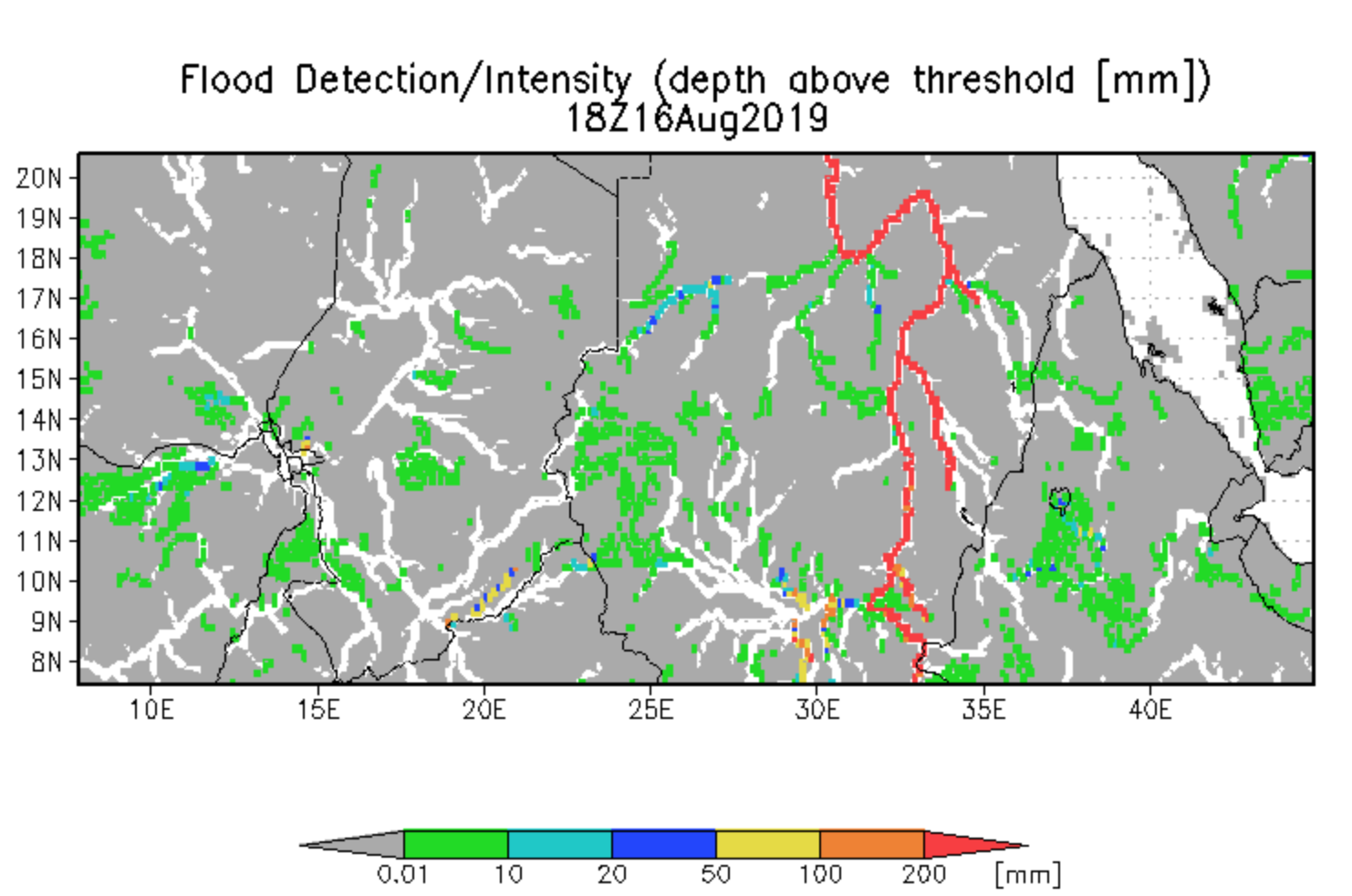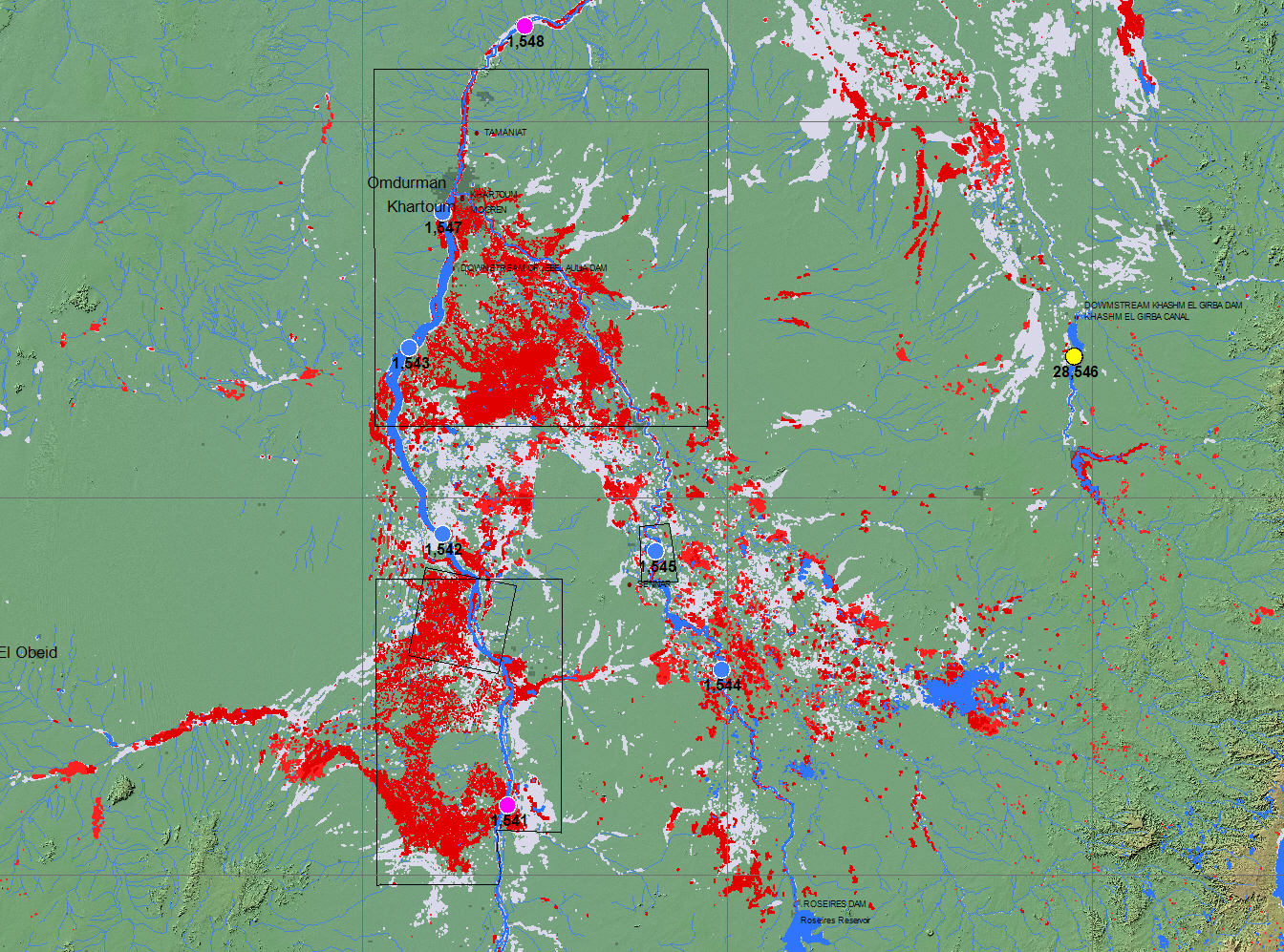







"21 AUGUST, 2019 BY FLOODLIST NEWS IN AFRICA, NEWS UN Office for the Coordination of Humanitarian Affairs (UN-OCHA), reports that recent flooding in Sudan has affected an estimated 171,700 people with further heavy rainfall forecast. Sudan's Humanitarian Aid Commission has reported 54 related deaths, mainly due to collapsed roofs and electrocution. In total 22,634 homes have been destroyed and 11,702 damaged. UN-OCHA said that the states affected include El Gezira (11,450 affected), Gedaref (14,850), Kassala (19,235), Khartoum (11,840), North Darfur (11,580), North Kordofan (3,355), Red Sea (10,315), River Nile (3,775), Sennar (10,095), White Nile (66,485), South Darfur (7,700), East Darfur (200), West Darfur (5,800), Northern State (1,000), South Kordofan and the Abyei Area (1,200).
White Nile State is among the worst hit, with an estimated 66,485 people affected, 4 fatalities, 10,517 homes destroyed and 2,780 damaged. In North Darfur 10 fatalities were reported with 1,161 homes destroyed and 1,155 damaged. Seven people have died in North Kordofan State; fifteen in El Gezira State. Eight deaths were reported in River Nile State in El Damar, Atbara,Berber, Abu Hamad, El Matama and Shendi localities.


The Flood Observatory maintains a Global Active Archive of large flood events, 1985 to present. New major flood events are entered into this archive each week. A hand-drawn GIS polygon for each event outlines the region affected.
This event was selected for Observatory production of map and GIS data products.This web page and associated image and map (GIS) files become the permanent Flood Observatory record of the flood.
As part of collaborations with other organizations, including
GEO and the Global Flood
Partnership, the Observatory's maps are made available here to the public.
Geotif versions and GIS files are also available. With attribution, maps and
data can be used freely for non-commercial purposes. With permission, they can
be used for commercial purposes. Consult the Creative Commons Attribution-NonCommercial-ShareAlike 4.0
International License and Robert.Brakenridge or Albert.Kettner (at
Colorado.edu) if questions. Attribution for this map when Sentinel SAR data are
used: "Dartmouth Flood Observatory at the University of Colorado, from satellite
data provided by NASA and Copernicus/European Space Agency". When using GIS data
(see below) provided to DFO from other sources, please acknowledge original
source.
NASA Landsat 8 and Copernicus/ESA Sentinel SAR data if used in this map were obtained from the the U.S. Geological Survey Hazards Data Distribution System. and the Sentinels Science Data hub, respectively. Landsat 8 is jointly managed by NASA and the United States Geological Survey. Copernicus is supported by the European Commission. MODIS data are obtained from the NASA NRT Global Flood Mapping facility (surface water extents) and from NASA Worldview (image files); SUOMI/VIIRS image data are also retrieved from NASA Worldview.
Flood extent files (Shp or Mapinfo) supporting this Flood Event Map are located here.
These files may include high spatial resolution mapping such as from Sentinel or Landsat, or lower resolution files from MODIS. File names commonly include the sensor source (e.g., S1 for Sentinel 1, LS8 for Landsat, MODIS, Aqua, or Terra for MODIS) and the image date.
The NASA Earth Sciences Program, the Latin American Development Bank, the World Bank, the European Commission's Global Disaster Alert and Coordination System, GDACS, and Copernicus Emergency Management Service, the Google Earth Engine research awards program, the Committee on Earth Observation Satellites (CEOS) Disasters Working Group-Flood Pilot, the Japanese Space Agency, and the European Space Agency all have supported the Observatory's work via research grants and contracts or free satellite-derived data.
The Dartmouth Flood Observatory was founded in 1993 at Dartmouth College, Hanover, NH USA and moved to the University of Colorado, INSTAAR, CSDMS in 2010. Its operation depends on continued grant and project support. Gift contributions can be accepted. If your organization uses these data and maps, please consider becoming a partner and helping to sustain this effort. The institutional support of both universities is gratefully acknowledged.
(counting since August 24, 2019)